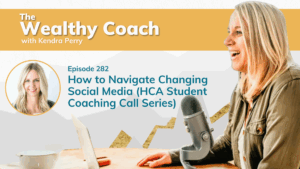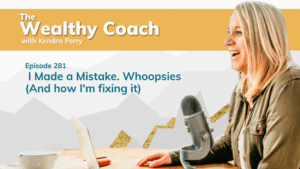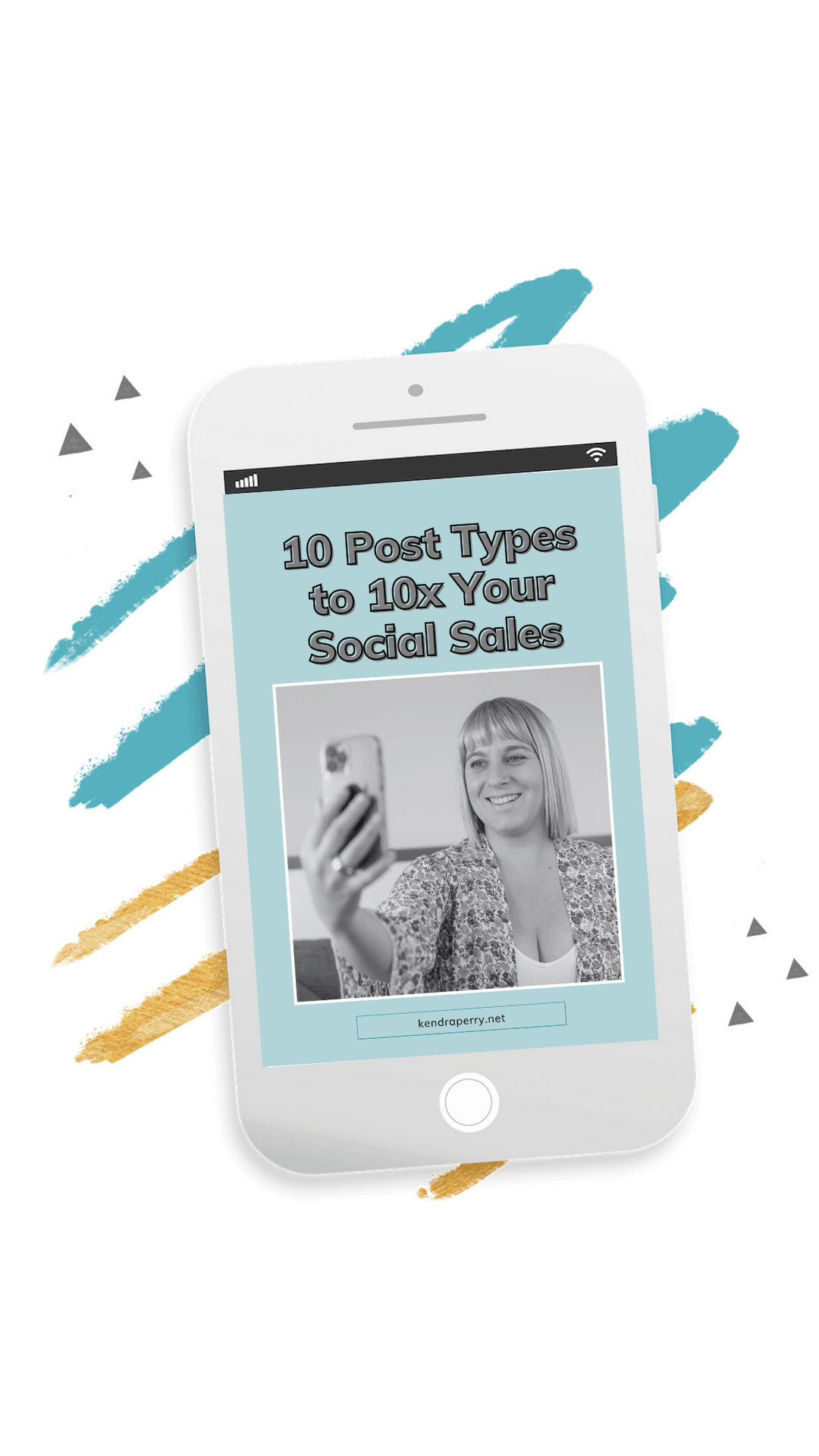One of Kendra Perry’s most beloved outdoor activities is traveling the avalanche terrain through backcountry skiing. Although it is an exciting activity, it also comes with a considerable amount of risks and safety requirements. In this episode, Kendra shares the discipline she has honed through ski touring that she carries over to her business strategies. She talks about the power of being comfortable with discomfort and the benefits of welcoming the risky aspects of entrepreneurship.
Give me a 5-star review: https://ratethispodcast.com/wealthy
Want to work with me inside Health Coach Accelerator? Get started with my free training: https://go.kendraperry.net/training
—
Listen to the podcast here
What Travelling In Avalanche Terrain Has Taught Me About Being Successful In Business
I’m excited to be here. I’m sitting here sipping on chalk. I’m not sure if it’s chalk but it tastes like chalk. You probably don’t care but in case you do, I’m doing an H. pylori detox protocol. I’ve talked about this a little bit on my Instagram Stories. I have this stubborn case of H. pylori. H. pylori unfortunately has become a pretty resistant and stubborn bug in the past few years. When I got into functional health coaching in 2013, it was easy to get rid of.
I remember addressing it with multiple clients. We would put them on a 60-day protocol. For the most part, it would go away but in recent years, it has adapted. It can shapeshift. It does all these crazy things. It’s perplexing the functional health industry and me because I’ve done so many protocols. I’ve decided that this is the protocol that I am going to get rid of it. I’m throwing this carpet bomb at it. I’m doing this five-day protocol from this company. Basically, I fast until noon.
At 8:00 AM, I drink this chalky-like substance. I sip on it for an hour. I take a couple of capsules with a little bit of bread and then go back to the chalk stuff and the capsules. At noon, I’m allowed to start eating but I’m supposed to avoid meat, which is sad because meat is life for me. I eat a very high-protein diet. That’s how I feel at my best. I’m supposed to eat light, which is also difficult for me because I like to eat. I’m also very active. I do a lot of activities so I tend to eat a decent amount of food.
It’s only five days, and then after the five days, I’m going to do a 60-day protocol with a bunch of other things like Mastic Gum. I’m doing some cell core stuff and hitting it with everything possible. I have spent a lot of time in PubMed and looked at all the different ways and studies that have shown certain alternative therapies to help. I’m doing everything. I spent $1,000 on all these supplements. I want to get rid of it because I believe it’s affecting my thyroid, my metabolism, and my gut health. My gut health has never been fantastic. I’m a child of the ‘80s. I was put on all kinds of antibiotics. I used to drink them like juice, unfortunately. I wonder if my gut will ever be fully healed. H. pylori is a big thing. I want to get rid of it. That’s what I’m doing.
Backcountry Skiing
I have a little bit of a headache. I’m not feeling super great about this protocol, which I’m taking as a good thing because I’m hoping that it means it’s doing something. It’s great that I get to hang out with you on this show because otherwise, I would be cranky watching some reality dating show. This is fun for me and it’s distracting me. Enough about me and my weird gut. Let’s dive into our topic. I want to talk a little bit about discomfort. The topic or the title of this episode is What Traveling in Avalanche Terrain Has Taught Me About Business because there’s a cool connection here. When I say traveling in avalanche terrain, I do this by skiing. You may or may not have heard of backcountry skiing. It’s also called ski touring.
We stick these things with glue. They have glue on them. They’re called skins. We put them on the bottom of our skis. They have these threads. They run against the snow and give you a grip. What these originated from was actual skins or the actual fur of animals. I don’t know which animals specifically but they would take the fur or the skin of animals so you would have the fur. The furs or the hairs travel in one direction. When you put them opposite up against the snow, it gives you a grip. We’re not using animal fur. It’s some synthetic fiber and glue. We put them on the bottom of our skis. We have these special bindings that allow our heels to release, and then we’re able to hike up.
We hike up to the top of a mountain and then ski down. The reason why we do this is that it allows us to get off the ski resort. I love being in the mountains. There’s nothing more I love than being alone in the mountains with a couple of friends. I love that feeling of feeling very insignificant in this huge world. It helps me feel like my problems don’t matter and that I should be happy and grateful for what I have.
The skiing is amazing because if you go to the ski resort, there are lots of people. On a powder day, it gets skied out quickly but in the backcountry, you can always get these amazing powder terms. You have to work for it. You got to like the hike because you’re hiking way more than you’re skiing. I’m there for the adventure, the experience, and the connection because I connect deeply with friends when I’m doing things like this. This is how I hang out with people. I’m not one to go for coffee. We usually do things outdoors like this.
When we’re out there, we carry a bunch of safety gear. We carry three main pieces of safety gear. One is called a beacon or a transceiver. This is the device that we wear on us that has a signal. When we’re wearing it, it has a signal on the device but when we switch it to send mode, what happens is we can pull up the signal of someone else’s transceiver.
For example, me and Ryan, my partner, were skiing. Let’s say an avalanche comes and he gets buried. I can switch my beacon into send mode and pick up his beacon. It will make little sounds. It has a little arrow on the screen. It will bring me to where he is buried in the snow. It’s a safety thing in case we get buried. We also carry a shovel because we might have to dig someone out. We also carry something called a probe, which is a long metal stick that folds up and allows us to find the person because they might be buried a couple of feet under the snow.
That allows us to find them so that we know where to dig because digging requires a lot of energy. I know that sounds scary but what I can tell you is I started ski touring when I was 21 years old. I’m now 38, and I’ve never had to dig anyone out. Does it happen? Yes. Do I know people who have been buried? I do. I live in a small community. We’re a ski community. These things do happen. It’s always a risk but we want to be prepared. I’m very grateful that I’ve never had to use it. I’ve never been caught in an avalanche personally but it does happen. Based on how the snow builds up, sometimes when you ski, it can trigger an instability in the snowpack, and then that will slide. We want to make sure we’re prepared in the event that it happens.
I know it sounds crazy but we have this great ability in the backcountry to manage risks. Certain choices are riskier than others. We have access to an app, Avalanche.ca. On there, we can get the snow report or the avalanche report. They are scientists who do these. They report every day, look at all the recent weather and what has been happening, and give you a rating. It can be low, moderate, considerable, or high.
What’s always safe or for the most part always safe in backcountry skiing is tree skiing because when there are trees on the slope, it doesn’t allow a slope to propagate. The big open slopes are always riskier places for avalanches where there are no trees because the whole thing can avalanche. The bigger the avalanche, the less chances you have of surviving whereas in the trees, you might get these little pockets that pop out but you don’t get this whole slope avalanching.
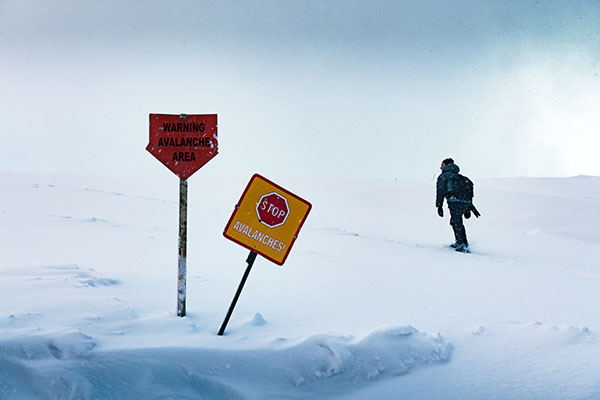
When we go out there, we take into consideration the weather that has happened and the different instabilities in the snowpack. Let’s say it rained and then it got cold. What we know is that there’s this hard layer in the snowpack like a skating rink. If there’s new snow on top of that, that will be a weak layer. That’s surface for snow to slide. We can look back at the weather. We take mental notes so we can say, “Yesterday this happened. This might be a risk.” We can look at the avalanche report and then make use of that to make conservative terrain choices.
Everyone has different risk tolerances. I have certain friends who I don’t do backcountry skiing with because they have a higher risk tolerance, and I’m not into that. The older I get, the more conservative I am. Honestly, at this point in my life, I don’t ski open stuff that often because I like to feel safe and comfortable. I don’t want to risk my life because I want to be able to ski tomorrow.
What does this have to do with business? I believe this has served me because I come from a bit of a crazy family. My father is very much an outdoors enthusiast. He’s a crazy skier. He used to be a rock climber. From a young age, I was pushed into competitive sports like skiing, taekwondo, and soccer. I was pushed to be outside my comfort level my entire life. Doing something like backcountry skiing was a natural transition for me in my twenties when I moved out West because I had already been doing a lot of things that required risks.
I have become comfortable with discomfort. This has served me in business because the business requires sitting in your discomfort, making decisions, and managing risks. There are always going to be risks. In backcountry skiing, even if I make the most conservative terrain choice, there’s still a risk, not even regards avalanches. It could be that I go into a tree well. If you can imagine trees, the snow comes down and builds everywhere around but under the tree, the snow doesn’t build up as well. You get these big holes. If you go into one of those, people sometimes suffocate.
I could injure myself or hit a tree and die from trauma. There are always risks. Backcountry skiing is inherently dangerous. You can never reduce all the risks but the same thing is true for your life. We take a risk every day when we step outside our house. There’s a risk when we drive our cars on the highway. People think I’m crazy for backcountry skiing but driving is way riskier because you’re dealing with things that are out of your control like other drivers who are texting and on TikTok while they’re driving.
Life and business are inherently risky. You cannot build a business inside your comfort zone. I believe this served me in building my business because I was used to being uncomfortable. I did it and pursued it even though a lot of what I was doing didn’t feel good. I was scared. I was afraid of judgment, saying the wrong thing, and trolls. I had a lot of fear but because I’ve learned how to manage my fear and manage risks, I was able to push through. This is a big thing that has served me in my business.
You might not want to do backcountry skiing but what can serve new business owners, and this is an opinion, take it or leave it, is to start to do things even outside of business that is outside our comfort zone. When we are living inside our comfort zone, it doesn’t serve us in terms of health. Health-wise, being comfortable all the time doesn’t serve us in satisfaction or building an amazing life because building something outside of the status quo or the norm requires stepping outside your comfort zone.
Hormetic Stress
I’ll use a health example here that will probably resonate with you. There’s something called Hormetic Stress. If you don’t know what hormetic stress is, it means good stressors. We live in temperature-controlled environments. We walk on sidewalks. We don’t want to be too cold. We don’t want to be too hot. We want our latte right. These things keep us comfortable but it makes us weak health-wise because it doesn’t build resilience.
What builds resilience is being exposed to stress that doesn’t kill you or stress you out too much but stress that helps you be stronger and build resilience. Exercise is a good example of a hormetic stressor. If we’re lifting weights, we’re tearing muscle fibers but what allows us to build the muscle is the tearing of the muscle and then the rebuilding because what it does is it says, “For the level of activity I’m doing, that wasn’t strong enough. I’m going to build back a bit stronger.” You can imagine if you never exercise, that would be bad for your body.
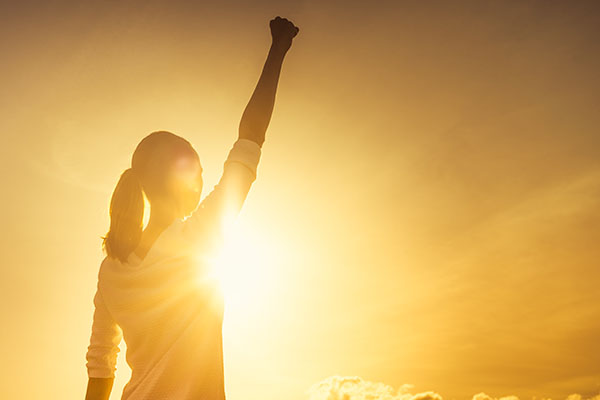
Other examples of hormetic stressors are cold therapy, heat therapy, and things like this. I posted a reel on my Instagram of me doing cold therapy. I had so many people comment who said, “I could never do that.” The truth is that’s not true. They could do it. They’re choosing not to because it’s scary. They have a fear of being uncomfortable and cold but they can do it.
By doing it, you get better at it and then reach the benefit. There are metabolic benefits and longevity benefits but there’s also this euphoria that happens with cold therapy. When I get my cold plunge, initially, there’s a shock to the system. I have to focus on controlling my breathing. Usually, for the first 30 to 40 seconds, this is also established and researched, so it’s not just me, you’re fighting with your brain. You have this urge, “I need to get out. This is cold. I can’t do this.” That is the hardest part because you have to control your mind and tell yourself, “It’s okay. I’m fine. This is good.”
Once I get past those 30 to 40 seconds, I start to settle. I start to become calm and then warm up, which is interesting. You’re boosting your metabolism. I’m creating this little heat bubble or force field around my body. I start to feel euphoric, connected, and spiritual. It’s very interesting. I start to feel this connection to God that I don’t feel when I do other things. I struggle with spirituality and that sort of thing. I get this deep connection to the source, God, and the Earth. I have this feeling of resiliency because I did something that I thought was impossible.
This is something that we need to do in our business because, with cold therapy, the risk may feel high in the first 20 to 30 seconds. However, the risk is very low because I can get out and get in a shower. I’m not going to go hypothermic. I’m not going to die. My house is right here. I’m not some caveman out in nature who fell into a river in the middle of winter in minus-40 weather.
A Healthy Relationship With Discomfort
When it comes to business, we have to develop a healthy relationship with discomfort. We can’t live in that temperature-controlled environment. We have to learn how to manage risk but the very cool thing about online business is the risk is quite low. When we think about brick-and-mortar businesses, retail, and restaurants, the risk is very high. You have to invest hundreds of thousands of dollars of capital. If it doesn’t work out, you can lose a lot. This isn’t true in online business. We still do need to invest but at most, in the beginning, you’re investing about $300 a month, which is nothing when we compare it to $100,000 to start a business. We have to get comfortable with risk management, discomfort, and struggle. This is where people get tripped up in business because business is inherently uncomfortable.
We have to get uncomfortable. We have to sit in and ease into the discomfort because nothing about it is going to be comfortable. You are putting yourself out there, being vulnerable, learning a new skill, and coaching people. Online business is not like brick-and-mortar where we can put up a storefront and a sign, and people walk in. That’s not how it works. People don’t stumble by your social media or your website. You have to actively promote yourself. You have to learn how to sell, have uncomfortable conversations, be a leader, and delegate.
All of this stuff is uncomfortable but when you embrace the discomfort, you build resilience. Things that were scary to me early on in my business don’t phase me anymore. Do the discomfort and fear go away? I want to be clear and transparent. No, it doesn’t. A lot of people are waiting for that time when it feels less scary. It doesn’t. You learn how to manage it better. You learn to accept it.
There are a lot of things I do in my business where I don’t feel any fear at all. In recording this episode, I have no fear. I love this. I love talking. I can riff on it forever. I love chatting but there are certain things where I feel fear because it’s new. I haven’t done it before. Something is not working as I hoped or I’m not making as much money this month so I start to stress. There is fear and discomfort. It doesn’t go away. I’ve built resilience but resilience can only come from discomfort and learning to sit in the risk.
Maybe get out there, do some cold therapy, sit in a cold plunge, get uncomfortable, and allow that to transition over into your business. I’m not saying you have to do cold therapy but I’m saying think of running your business as a hormetic stressor. That’s good stress. It will help you build resilience, courage, and something that is truly worthwhile or something that truly allows you to live the life you want to live. Continuing to be in your corporate job and have a regular paycheck or that 9:00 to 5:00 is the comfort but comfort isn’t always rewarding or fulfilling.
For some people, it is. For those people, that’s great. We need those people. They’re the ones who are not going to have a business and do those other jobs that we need people to do but if you’re reading this, that’s not you. You don’t like the status quo. You’re over it. You want something more for yourself. The things that are worth the most require a little bit of struggle to get there but know that every time you step outside your comfort zone, you’re building resilience and trust. It’s because every time you do something uncomfortable, and it doesn’t kill, you start to trust yourself a little bit more.
A Test Of Fitness
I now know I trust myself that I can sit in a cold plunge for four minutes, and I’ll be fine. That helps me get through the first 30 to 40 seconds where I’m wanting to get out because I trust myself. Another way I like to think of this or another good analogy is fitness. I do a lot of outdoor sports ski touring. We will come back to that example. It’s very energy-intensive. It is unlike anything else. If I go out for a two-hour ski tour, I’ll often burn about 2,000 calories to give that some context. I could do a 30-minute HIIT workout and burn 300 calories or maybe 400 calories, or CrossFit or something like that and maybe burn up to 500 calories. I do a 2-hour ski tour and burn almost 2,000 calories. It’s very energy-intensive. It’s the same thing with mountain biking. That’s another thing I do.
The problem is I have exercise intolerance. This is something that happened when I had my health issues that started in 2012. I’ve come out of that. I’ve done a lot of healing. It took a long time but I still have some lingering symptoms, and I do have a bit of exercise intolerance. It’s way better than it used to be because in the past, going for a walk was exhausting. If you’re not familiar with exercise intolerance, it means that I’m way more tired from exercise than most people. It means that I have a hard time improving. I don’t see a lot of improvements in my endurance. I could bike every day all summer, and it will still be as hard for me. I’ll still be as slow. I don’t get better, just slightly.
It is getting better and it is something I’m still working on but what that means is with everything I do and the things I’m passionate about like going on these big ski touring trips or mountain bike trips, it is always a struggle. It is always hard for me. It is never easy. When I’m doing it, I’m exhausted. I have to say this mantra over and over to myself, “You are strong, badass, and resilient.” That’s what I repeat to myself because I have to. I want to give up. I’m exhausted. I’m always behind. I’m never in the front. I’m not far behind. I’m holding my own but I’m always in the back. That’s how it is for me but I trust myself that I will always do it because I know I will always get there even if it’s incredibly painful.
A couple of years ago, I did a three-day mountain bike traverse in Northern British Columbia. It was the trip of a lifetime. It was the best trip I ever did but it was big. We did 80 kilometers in three days. We went over six mountain passes. We were hiking a bike, meaning that I was pushing my bike up hills and mountains for hours. I was carrying my bike on my back. It was intense and serious. I knew I was going to struggle. I had a lot of fear going into it because I was like, “Am I going to be able to do it?” When it came down to it, I trusted myself. I thought, “It’s going to be painful and hard. I’m going to be pissed off at myself at some point. This is the worst but I’ll get there. I’ll do it with a smile on my face.” I did it. I was in the back. I was at the end.
I was struggling. I was exhausted. I needed three days to recover but I did it. I knew I would. I’m jumping around a lot. Hopefully, you’re following me but that self-trust is important. That’s something we need to cultivate but you’re not going to trust yourself in the beginning as you’re not going to trust that the cold therapy is not going to kill you the first time you do it. It’s all these little steps that we take in our business to get outside our comfort zone that allow us to build resilience. That resilience builds courage, and that courage builds trust because when it comes to building a business, the most important mindset that you can cultivate is self-belief and self-trust.
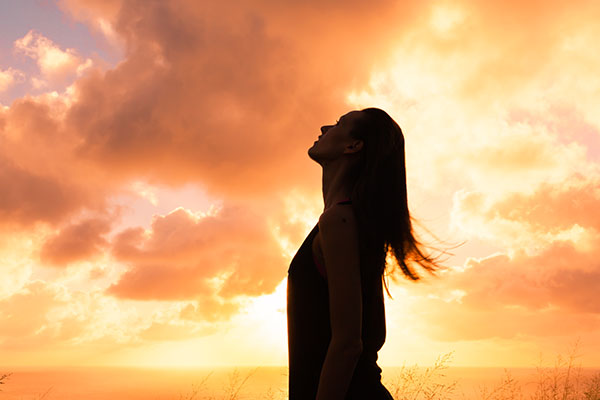
It’s like, “This isn’t working. I’m not getting the results that I want but I believe I can.” If you believe you can, you will continually make the decisions that help you get there. It will get easier over time. All the things that are worthwhile will come because the worthwhile things don’t happen in the comfort zone. They happen in risk and discomfort. Start getting uncomfortable. It’s going to be painful. You’re going to struggle. It’s not going to feel good but the other side of discomfort is where all the good things are. You can get there, my friend. Don’t give up. Thank you so much for tuning in. I hope you found this helpful. If you love this episode, the first thing you can do is take a screenshot on your smartphone, share it to your Instagram Stories, tag me @KendraPerryInc, and let me know your greatest take home.
I love to know how my episodes impact you. If you have a little bit of extra time, I would love it if you could leave me a five-star review on iTunes. Go to RateThisPodcast.com/Wealthy. I would love to hear from you. Thank you so much for tuning in. I always appreciate you taking time out of your day to tune into me and blab on about whatever. I will see you at the same time and the same place where I help you become wealthy AF.
Important Links
- Avalanche.ca
- @KendraPerryInc – Instagram
- RateThisPodcast.com/Wealthy
- https://go.KendraPerry.net/Training



